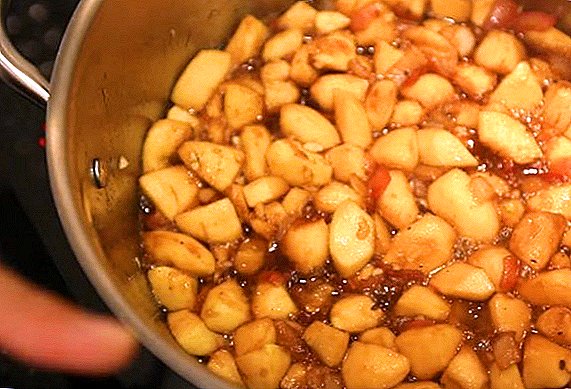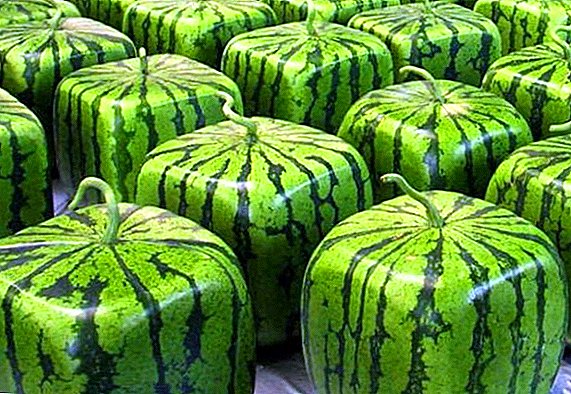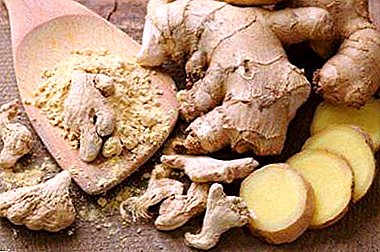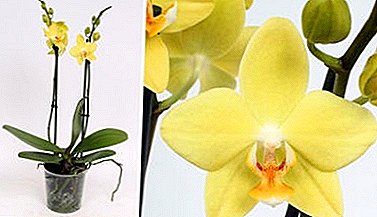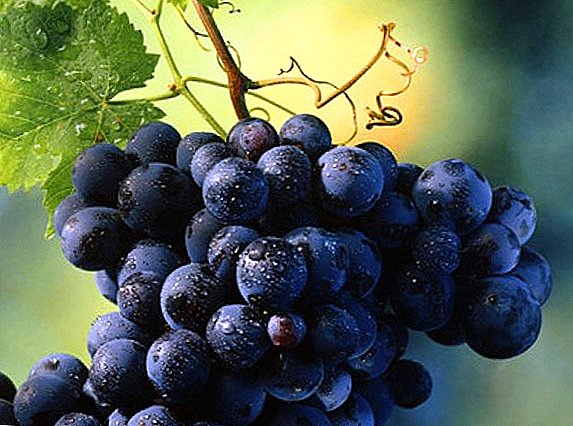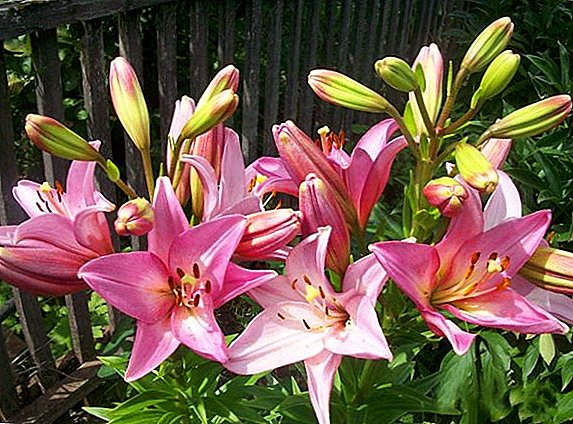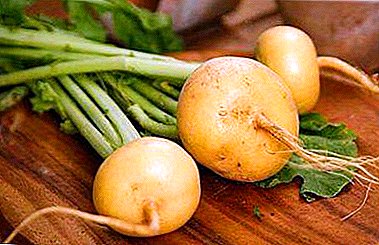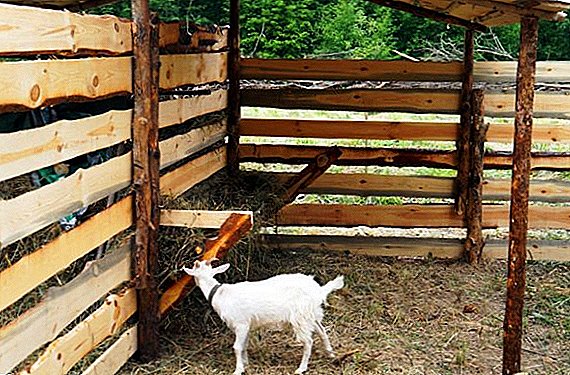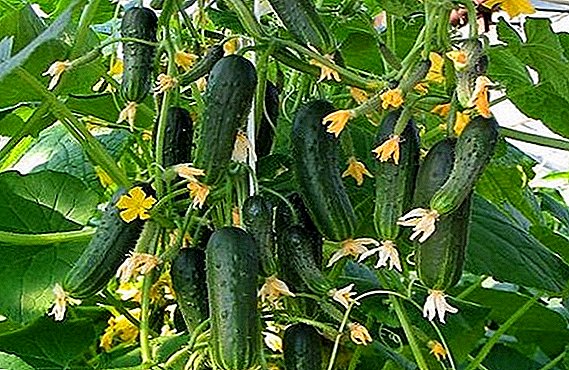 Cucumber with an unusual and promising name - “Everyone to the envy of f1” - is a very popular variety among summer residents with different experiences of growing vegetables. This hybrid has many advantages, among which, of course, high yields. According to reviews of experienced gardeners, the process of flowering varieties fascinates with beauty, and the number of harvested truly impressive - consider the features of these cucumbers in the article.
Cucumber with an unusual and promising name - “Everyone to the envy of f1” - is a very popular variety among summer residents with different experiences of growing vegetables. This hybrid has many advantages, among which, of course, high yields. According to reviews of experienced gardeners, the process of flowering varieties fascinates with beauty, and the number of harvested truly impressive - consider the features of these cucumbers in the article.
Variety description
Cucumber varieties "Everyone envy" is self-pollinating, successfully grown in greenhouses, under film and on open ground, can also be grown on a balcony or window sill. The central and lateral shoots grow strongly and magnificently, forming up to 6 ovaries in the nodes. 
One of the main advantages over other varieties is the possibility of growing a hybrid in low light conditions: the cucumber gives high yields even when it is planted in the shady areas of the vegetable garden.
The presented variety has such indisputable advantages:
- self-pollinating, which means flowering does not depend on the presence of pollinating insects;
The self-pollinated varieties also include such as "Cedric", "Emerald earrings", "Hector", "Siberian garland", "Ecole".
- gives stable high yields;
- differs in long fructification (up to frosts);
- resistant to some typical pests and diseases;
- tolerates low and high temperatures;
- harvest can be used in fresh and processed form;
- can be grown as a houseplant;
- The harvest is characterized by good keeping quality and transportability.
Among the possible disadvantages are the higher cost of planting material, as well as the inability to procure seeds on their own at home. Other pronounced disadvantages of this hybrid variety is not observed. 
Did you know? Due to the fact that cucumbers are often collected very small, just formed from the ovary, they got their second name - Zelentsy.
Fruit characteristics and yield
This variety refers to early ripening - fruits appear 45-50 days later after planting. The yield of the variety is up to 400 pcs. cucumbers from one bush, that is about 40 kg / sq. m, and to a lesser extent depends on weather conditions, unlike other varieties.
The variety is a hybrid, because the bushes are highly resistant to pests, diseases, adverse environmental conditions, including extremely low or high temperatures.
Fruits are obtained in the correct cylindrical shape, from 8 to 13 cm in length, weight varies between 80-100 grams, they are painted in a saturated green color, moderately pubescent, with white spikes. 
The described variety has a very tasty and juicy pulp and crispy dense skin, so it is perfect for fresh consumption, as well as for pickling, souring and pickling.
Learn how to pickle and pickle cucumbers, as well as how to make salted cucumbers in a package, sliced cucumbers for the winter, a salad of cucumbers.
Selection of seedlings
If you buy ready-made cucumber seedlings of this variety, you need to carefully choose planting material. Its quality determines survival rate and yield.
General standards when choosing cucumber seedlings:
- worth buying seedlings at the age of 1 month;
- plant height should be 25-30 cm;
- the length from the root collar to the cotyledons should be no more than 5 cm; the thickness of the seedling should be within 5-10 mm;
- the number of leaves varies from 5 to 6;
- internodes are short;
- in general, the stem looks sturdy, painted in dark green;
- the root system is well developed, occupies the entire pot, with no areas of rot or unpleasant smell.

Important! You should not buy strongly elongated, weak seedlings with light and rare leaves. This appearance indicates violations of agricultural practices.
Necessary conditions for growing
Despite the high endurance and unpretentiousness of this variety, there are still certain conditions, under which you can get the richest harvest:
- Lighting. Grow well in pritennyh places and in areas with direct sunlight, while not getting burned.
- Temperature. It is necessary to plant seeds only after night frost retreats, the temperature of the soil should be about 15 ° C, after germination the temperature regime in the range of 20-25 ° C is considered optimal.
- Watering. Need 3 times a day for a week.
- Feeding. During the period of the formation of the fruit and after the first harvest the bushes need complex and nitrogen-containing feedings.

Growing seedlings
If you decide to grow cucumbers completely independently, you need to start with the preparation of seedlings. This process has its own characteristics: the seeds need to be prepared, properly planted, to create optimal conditions, and after germination to provide adequate care.
Conditions of detention
It is necessary to grow seedlings in separate small containers, for example, in plastic or peat cups, 1-2 seeds in each, because in general the cucumber is very sensitive to changing places and reacts sharply to the transplant.
Learn how to grow seedlings in cassettes, in diapers.
To prepare the soil should be mixed in equal parts peat, sand and garden soil. It is also important to observe the timing of planting seeds: the most optimal time is the period from the second decade of April to the end of the first decade of May. 
Seed preparation and sowing
It is advisable to use seeds purchased in the store, as when collecting seeds from hybrids there will be very few chances to get fruits with identical characteristics next year. The best yields show seeds with a 3-4 year shelf life.
But in general, subject to the rules of storage, you can use seeds up to 10 years.
Important! Industrial seeds are disinfected and fully prepared for planting, because if you buy planting material, it does not need to be pre-treated for pests. Homemade seeds must be disinfected in a solution of potassium permanganate.
Before landing, it is necessary to carry out such manipulations:
- soak the seeds. To do this, it is enough to wrap the planting material in a wet cloth for several days. It is important to ensure that the fabric always remains hydrated;
- harden before planting. This procedure makes the seeds more stable and strong. It is necessary to move the cloth with the rolled seeds to a cold place for two days, the temperature should be about 0 ... + 2 ° С. After the procedure, the seeds should be planted in containers as soon as possible.

The depth of laying the seed is 1-2 cm, after that the cups need to be covered with a film and left at a temperature of + 22-28 ° C. With the advent of the first seedlings, the temperature is reduced to the mark of + 20 ° С. A place with seedlings should be well lit, with a shortage of natural light, artificial lighting should be provided.
Before seedlings appear, seeds need to be watered every other day; only distilled, soft water of warm temperature can be used.
Seedling care
Proper care of the seedlings is the key to a strong and healthy seedlings, which will take root in the soil. Young plants need enough light, the duration of daylight should be at least 10-12 hours.
Sprouts need daily watering, water requirements are the same as for seed care. Observing these simple rules will allow you to get bright green viable seedlings with a thick stem. 
Before planting in the ground it is important to temper the seedlings. To do this, it must be taken to fresh air, starting from 30 minutes a day and gradually increasing the duration. The outdoor area should be slightly shaded.
After a month from planting seeds, seedlings can be planted in permanent soil. By this time, they acquire the appearance that we described in the paragraph on the choice of seedlings.
Agrotechnics cultivation and care for cucumber
Next, we will consider in detail the process of growing the variety-to-envy variety cucumber, including the general conditions of detention, the characteristics of transplanting and planting seeds directly into the soil, the nuances of care, the rules for harvesting and storing crops. 
Outdoor conditions
General conditions for growing crops in open ground:
- Lighting. Cucumbers react very positively to the lighting, however, this hybrid variety grows quite well in shaded areas.
- Watering. Cucumbers need regular abundant watering with warm water.
- A place. You can not plant cucumbers in the lowlands, where moisture is collected and the cold air. The described variety is suitable for greenhouse cultivation and planting in open ground. It is also important to follow the rules of crop rotation, which will be discussed later.
- Temperature. The optimum temperature is within + 22-25 ° C.
- Transplanting seedlings. Depending on the climatic conditions of the region, its periods are as follows - from mid-May to mid-June, when the earth warms up to + 15 ° С and higher.
Did you know? Eastern Slavs in honor were pimply "real" cucumbers, but in Europe they preferred exactly smooth vegetables, so cucumbers with pimples were called vegetables in the “Russian shirt”.

Soil requirements
The soil for cucumbers should be light - this culture is very well developed in a neutral, moist, breathable soil with good drainage. Before planting, it is necessary to apply fertilizer (cow dung) at the rate of 10-15 kg per 1 sq. Km. m
It is optimal to plant cucumbers after such crops: green manure plants, early and cauliflower, table beets, leeks and ordinary, tomato and potatoes.
As a siderata such plants as rye, buckwheat, alfalfa, phacelia, mustard, rape, sweet clover, oats are used.
You can not plant this crop after growing other melons. The plot where the cucumbers were cultivated can be planted with cucumbers again no earlier than in 3-4 years.
The process of planting and transplanting in open ground
Next, we consider how to plant seedlings in the open ground, as well as plant seeds by the direct method. 
Transplanting seedlings to ground
It is held from the second half of May, while cucumbers necessarily need shelter. Since early June, the shelter can not be used. The planting scheme looks like this: 15x60 cm. It is necessary to make holes, carefully remove the plant from the tank, deepen it in the hole, pour it and sprinkle it with earth. Then the seedlings gently attached to the supports.
Direct sowing of seeds in the ground
This method gives excellent results in regions with warm climates. Depending on weather conditions, the landing may continue from mid-May to mid-June. It is advisable to carry out planting in several passes: this will save plants in case of severe frosts, as well as increase the period of fruiting.
The soil during planting should warm up to + 15 ° С. Lay the seeds need to a depth of 1.5-2 cm, the distance between the bushes is up to 15-20 cm, between the beds - about 65 cm. At the end of the territory you need to cover the film material. 
Watering and moisture
Watering should be moderate and regular. It is optimal to water the beds with greens 3-4 times a week, however, it is necessary to proceed from the degree of soil moisture, the temperature of the environment during the day and at night. In cold and cloudy weather, as well as in the rainy season, watering decreases or stops temporarily.
Before the onset of the dining heat it is possible to water on the leaves, and in the evening, before the onset of coolness, they pour it under the root. Water, if necessary, must be heated to + 24-28 ° C, cold can not be used.
Important! If you grow cucumbers in a greenhouse, after watering the room must be ventilated.
Moisture regime in different periods of plant development:
- before flowering - watering daily, 1 l per bush;
- from the formation of ovaries to the middle of fruiting - watering occurs every 2-3 days, 10 l per square. m;
- from August to the end of the season - the frequency of irrigation is reduced to 1 time per week, consumed up to 5 liters per square meter. m

Soil loosening, weeding, mulching
For the first time, it is necessary to loosen the soil after germination, then repeat the procedure every 10 days. Since the roots of cucumber lie close to the surface, it is necessary to carry out all manipulations with the soil very carefully so as not to disturb the root system.
You can loosen with pitchforks, plunging them into the ground between the beds without scrolling and other movements. At the same time, we can carry out weeding. To maintain soil moisture and prevent weed overgrowth, mulching will be more effective.
After watering, wetted soil should be covered with sawdust or freshly cut grass. 
Pinching
Pastage is recommended for any method of growing cucumbers of this variety. This procedure allows you to get a harvest earlier and in larger quantities. It is necessary to carefully prune side shoots in order not to damage the main stem and flowers. It is necessary to remove side shoots at their size of about 5-6 cm.
Important! Fully remove the stepsons can not, because they placed the female flowers of the plant - removing them, you can greatly reduce the effectiveness of pollination.

Garter
Unfortunately, the need for cucumber bushes in the support is often ignored by summer residents. But the plant is abundantly lagging, clinging to any support whenever possible, and if it does not find such, it often dries out prematurely and reduces fruiting.
It is especially important to resort to a garter, if you grow cucumbers in open ground.
With the help of simple technology, it is possible to get more of the ovaries, and accordingly, fruits, to minimize the infection with fungal infections, more efficiently use the space on the site and ensure a comfortable process of harvesting and caring for the bushes. 
If you grow a vegetable in the open field, you can use these options garters:
- vertical - along the edges of the beds two strong supports are installed, on which horizontal rods are stretched. The supports must be high enough, otherwise the plant will hang down and create a shadow when it reaches the top bar;
- horizontal - two pillars are also constructed at the edges of the bed, one horizontal thread is stretched between them, from which ropes (wire) go down to each bush;
- mesh - the method is simple: a grid is installed along the bed and the bush has complete freedom of weaving.
With greenhouse cultivation, cucumbers also need to be tied up in order for the bushes to get more sunlight, and in order to prevent rotting. You can choose any of the above methods or build a special trellis for bushes.
Top dressing
Fertilizers can be mineral and organic, as well as root and foliar. Fertilization occurs in several stages throughout the entire life cycle of the cucumber bush. At each stage, you can apply a different feed. 
- I dressing 2 weeks after landing. You can use organic fertilizers. Chicken droppings are taken at the rate of 1:15, and cow or horse manure - in a ratio of 1: 6. Fertilizers need to be at the root, in the evening after abundant watering.
- II feeding occurs at the beginning of flowering. You can make both root and foliar dressing. The first ones are suitable for hot weather, and if summer is cool, it is recommended to resort to foliar application of fertilizers. Of mineral fertilizers, ash mixed with water gives an excellent effect: for 1 liter of water, 1 cup of raw materials. For the preparation of foliar mixture, you can use superphosphate: 35 g per 10 l.
- III and IV feeding fall on the period of fruiting to maintain the plant and extend the period of productivity. During this period, ash also gives good results, or urea can be used at the rate of 15 g per 10 liters of liquid.
Important! In no case can not perebarschiv with dressings, otherwise it can destroy the plants. If the soil in your territory is fertile and the yields are high, you can reduce the number of dressings to 1-2 per season.

Pests, diseases and prevention
As we noted above, this variety has a high resistance to all common cucumber pests and diseases. So, bushes are rarely affected by root rot, powdery mildew, cucumber mosaic and spotting provided proper agricultural practices.
For the prevention of diseases, it is necessary to follow the recommendations for care: observe the moisture regime and use prepared water, follow the rules of crop rotation and planting periods.
For the prophylactic treatment of the bushes you can use the biological product "Trichodermin" in accordance with the instructions, which has a bactericidal and fungicidal effect. 
Harvesting and storage
The ripening of the fruit in the variety "All to envy" occurs after 45-50 days from the time of planting. Depending on the destination, you can collect cucumbers of different sizes. So, for preservation, it is best to pick off fruits of 8-10 cm, for some recipes very small green stuff is needed - about 4 cm in length.
For fresh consumption, fruits of 10-12 cm in length are harvested. It is absolutely impossible to tear off, pull, or twist the stem during harvesting. It is necessary to carefully cut the cucumber with a sharp knife, leaving the stalk on a branch.
The basic rule in picking cucumber crops is regularity. It is unacceptable to collect Zelentsy from time to time or 1-2 times a week. It is necessary to check the availability of fruits every other day. It is best to collect the fruit in the early morning or evening.
Fresh cucumbers are stored for long. When the outside temperature is already on the second day, they will lose some of the nutrients, their appearance will begin to deteriorate, and in the sun they will begin to fade after a few hours. 
It is optimal to store fruit at a temperature of + 6 ... + 8 ° C and humidity of about 90%, in a cellar in boxes or in a refrigerator in non-tied plastic bags for up to 10-14 days. Fruits cannot be washed before storing.
Possible problems and recommendations
The described variety is distinguished by unpretentiousness and good endurance, however, with errors in care, sometimes such problems can arise:
- bitterness in taste. May appear with moisture deficiency. For irrigation you need to use soft warm water and irrigate not only the root zone, but also the whole territory of the bed;
- irregular shape of the fruit. Ideally, the fruits of this variety have a symmetrical oblong shape. If cucumbers begin to thicken at the stem, this indicates a nitrogen deficiency, but if the fruits thicken at the tip, then the bushes lack potassium. In the first case, it is necessary to introduce organic fertilizers (cow dung), in the second case potassium phosphate will help well;
- twisting foliage. The main causes may be a lack of minerals (potassium, magnesium, sulfur, phosphorus) or lack / excess moisture. Check the soil under the bushes and in the case of drying, moisten, rustle and mulch it. If the matter is not in the soil, try using complex mineral fertilizers;
- Falling ovaries. This problem most often occurs at very low temperatures at night, lack of potassium.

In general, the variety of hybrid cucumbers "Everyone envy" has earned a very good reputation among gardeners. It can grow as experienced gardeners, and novice lovers.
High yield, endurance, tremendous taste characteristics and preservation of fruits make this variety almost perfect and fully compensate for the relatively high costs of planting material.



